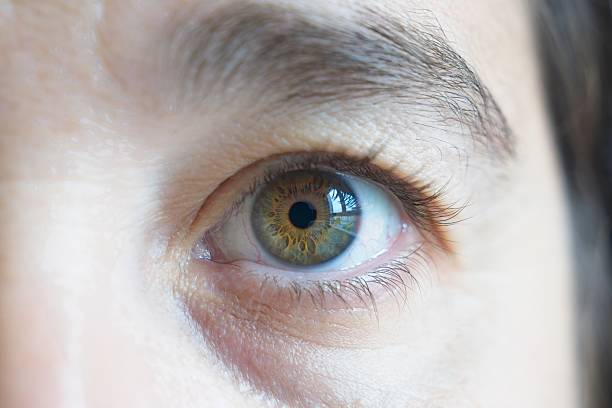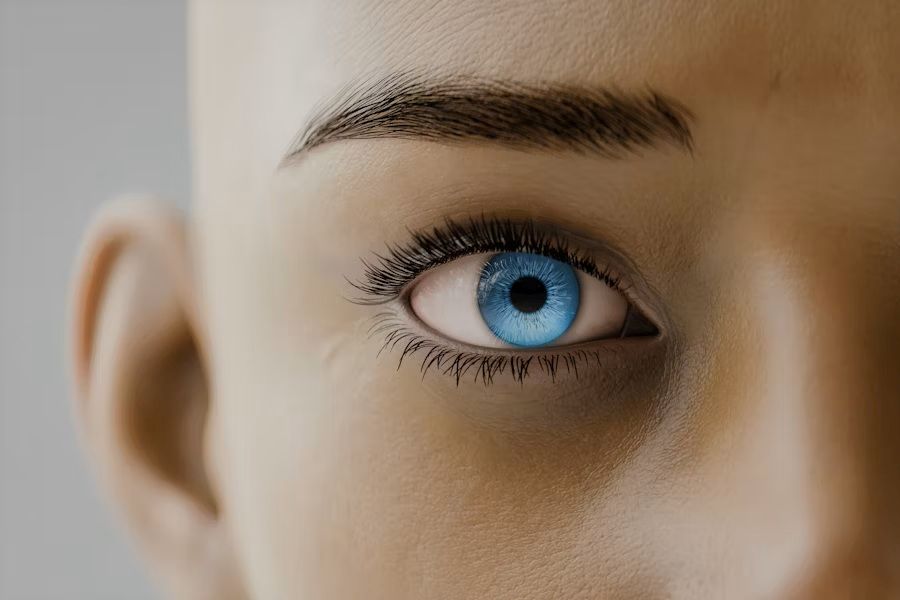Ihr Wagen ist leer
Why Light-Colored Eyes Are More Sensitive to Brightness: The Science Explained

Have you ever wondered why people with blue or green eyes seem to squint more in bright sunlight? This fascinating phenomenon isn't just coincidence – it's rooted in the complex relationship between eye color, genetics, and light sensitivity. Let's explore the scientific reasons behind why light-colored eyes are more sensitive to brightness and what it means for those affected.
Table of Contents
-
Understanding Eye Color and Iris Structure
-
The Role of Melanin in Eye Color
-
How Light Interacts with Different Eye Colors
-
Scientific Explanation of Light Sensitivity
-
Why Blue and Green Eyes Are More Light Sensitive
-
Common Symptoms of Light Sensitivity
-
Genetic Factors Behind Light-Colored Eyes
-
Environmental Impact on Light Sensitivity
-
Protective Measures for Light-Sensitive Eyes
-
Modern Solutions and Treatments
-
Living with Light-Sensitive Eyes
-
Frequently Asked Questions About Light Sensitivity
Understanding Eye Color and Iris Structure
The iris, the colored portion of our eye, is a remarkable structure that controls how much light enters our eyes. Like a sophisticated camera aperture, it expands and contracts to regulate light exposure to the retina. The iris consists of two layers: the front pigmented fibrovascular layer and the back pigmented epithelial layer.
These layers contain varying amounts of melanin, the same pigment that determines skin color. The structure of the iris is complex, featuring tiny muscles that control pupil size and intricate patterns unique to each individual.
In light-colored eyes, the iris structure is more delicate and contains less pigmentation, making it more transparent to light. This structural difference plays a crucial role in how different colored eyes respond to bright conditions.
The Role of Melanin in Eye Color
Melanin is the key player in determining eye color and light sensitivity. This pigment serves as a natural protector against harmful light rays. Brown eyes contain the highest amounts of melanin, while blue and green eyes have significantly less.
The amount of melanin in your iris affects not just the color you see, but also how your eyes handle light exposure. Higher melanin concentrations provide better protection against both visible light and UV radiation, acting as a natural sunscreen for your eyes.
People with darker eyes benefit from this additional protection, while those with lighter eyes have less natural defense against bright light. This difference in melanin concentration explains why light-colored eyes are generally more sensitive to brightness.
How Light Interacts with Different Eye Colors
When light hits the iris, several things happen simultaneously. In dark-colored eyes, most light is absorbed by the abundant melanin. However, in light-colored eyes, more light penetrates through the iris tissue, causing increased scatter within the eye.
This scattering effect can lead to:
-
Greater glare sensitivity
-
Increased light dispersion within the eye
-
More visual discomfort in bright conditions
-
Higher risk of light-induced headaches
The physics behind this interaction explains why people with lighter eyes often need additional protection in bright environments.
Scientific Explanation of Light Sensitivity
Light sensitivity, or photophobia, has a direct correlation with iris color. Research shows that people with light-colored eyes experience up to 20% more light sensitivity than those with dark eyes.
The scientific explanation involves two main factors:
-
The reduced melanin content in light-colored eyes allows more light to penetrate the iris
-
The scattered light creates more internal reflection and stimulation of light-sensitive nerve endings
This increased stimulation can trigger various responses in the nervous system, leading to discomfort and the need to squint or shield the eyes in bright conditions.
Why Blue and Green Eyes Are More Light Sensitive
Blue and green eyes lack the protective melanin found in brown eyes, making them naturally more vulnerable to light. This vulnerability manifests in several ways:
-
Increased light scatter: Light-colored irises allow more light to bounce around inside the eye
-
Greater retinal exposure: More light reaches the sensitive retinal tissue
-
Enhanced glare sensitivity: Bright lights can cause more significant discomfort
-
Faster pupillary response: The eyes must work harder to regulate light intake
These factors combine to create a heightened sensitivity to bright conditions in people with light-colored eyes.
Common Symptoms of Light Sensitivity
People with light-sensitive eyes often experience various symptoms, particularly in bright environments. These can include:
-
Immediate discomfort in bright light
-
Frequent squinting or eye closure
-
Headaches triggered by bright conditions
-
Eye strain and fatigue
-
Watery eyes
-
Difficulty adjusting between different light levels
Understanding these symptoms is crucial for developing appropriate coping strategies and seeking proper treatment when necessary.
Genetic Factors Behind Light-Colored Eyes
The genetics of eye color is complex, involving multiple genes that determine melanin production and distribution. Light-colored eyes are more common in populations originating from northern Europe, where reduced sunlight exposure influenced evolutionary adaptation.
This genetic heritage continues to affect millions of people today, with light eye color being passed down through generations. Understanding your genetic predisposition to light sensitivity can help you take appropriate preventive measures.
Environmental Impact on Light Sensitivity
Environmental factors can significantly affect how light-sensitive eyes respond to brightness. These include:
-
Altitude (higher elevations mean stronger UV exposure)
-
Time of day (morning and evening sun can be particularly challenging)
-
Reflective surfaces (snow, water, sand)
-
Artificial lighting conditions
-
Screen exposure
Understanding these environmental factors helps in managing light sensitivity effectively.
Protective Measures for Light-Sensitive Eyes
Several protective measures can help manage light sensitivity:
-
Quality sunglasses: Invest in UV-protective eyewear
-
Polarized lenses: These reduce glare from reflective surfaces
-
Wide-brimmed hats: Provide additional shade
-
Anti-glare screens: Reduce digital eye strain
-
Proper lighting: Maintain appropriate indoor lighting levels
These measures can significantly improve comfort for those with light-sensitive eyes.
Modern Solutions and Treatments
Today's technology offers various solutions for managing light sensitivity:
-
Photochromic lenses that automatically adjust to light conditions
-
Special coatings for everyday eyewear
-
Blue light filtering technology
-
Advanced contact lens options
-
Medical treatments for severe photophobia
These modern solutions provide more options than ever for people with light-sensitive eyes.
Living with Light-Sensitive Eyes
Living with light-sensitive eyes requires awareness and adaptation. Developing good habits and understanding your triggers can make a significant difference in daily comfort. Regular eye examinations and open communication with eye care professionals ensure proper management of light sensitivity.
Frequently Asked Questions About Light Sensitivity
Q: Can light sensitivity worsen over time? A: While basic light sensitivity related to eye color is constant, overall sensitivity can change due to age, medical conditions, or medications.
Q: Are children with light-colored eyes more sensitive? A: Yes, children with light-colored eyes should be especially protected from bright light as their eyes are still developing.
Q: Can diet affect light sensitivity? A: While diet doesn't change basic light sensitivity, certain nutrients can support overall eye health.
Understanding the science behind light-colored eyes and their increased sensitivity to brightness helps us better protect and care for our vision. By implementing appropriate protective measures and staying informed about available solutions, people with light-sensitive eyes can effectively manage their condition and maintain comfortable vision in various lighting conditions.
Remember that while light-colored eyes may require extra care and protection, they're also a unique and beautiful feature that adds to human diversity. With proper understanding and management, light sensitivity doesn't have to significantly impact daily life.
Hinterlasse einen Kommentar
Kommentare werden vor dem Erscheinen genehmigt.




